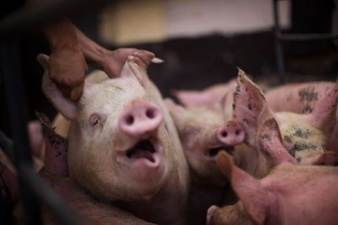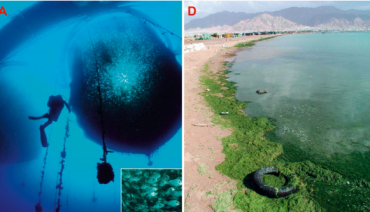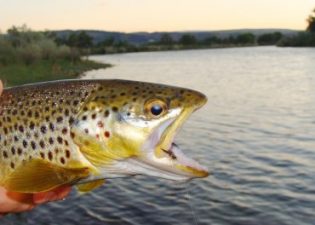 A new report sheds light on when, where, and how aquaculture is terrible for the environment, and when it’s not so bad.
A new report sheds light on when, where, and how aquaculture is terrible for the environment, and when it’s not so bad.
Aquaculture has a bad environmental rap. Possible negative impacts associated with fish farms include eutrophication or the loss of oxygen in water, greenhouse gas emissions, land occupation, excess energy demand, and biotic depletion stemming from feeding wild fish to farmed fish.
But Blue Frontiers, a recent report co-produced by the WorldFish Center and Conservation International, reveals that not all fish farms are equally destructive and that some farms can even have a positive environmental impact.
The report honed in on Asia in particular, since that continent is responsible for 90% of the world’s farmed fish stocks, though most of the major producers were evaluated.
Asian aquaculture has the worst environmental record not only because of the sheer volume of its production, which increases its impact, but because the species favored there, Carp, exacts one of the largest tolls.
Here’s a brief breakdown of the relationship between species and the environment:
- Inland pond culture and carp farming have the highest absolute impact;
- Shrimp, prawns and other carnivorous species stand out as especially biophysically demanding;
- Salmonids are demanding as a result of the use of fishmeal for feeding;
- Bivalves and seaweeds place low demands on the environment and actually reduce eutrophication
Compared to farming livestock, a global warming nightmare given the vast quantities of land and grain required to feed them and highly polluting methane pumped into the atmosphere, fish farming is fairly benign.
Aquaculture products contribute less per unit weight to global emissions of nitrogen and phosphorus than pork and beef and convert a higher percentage of the food they eat into consumable protein.




Thanks Malenita. Maybe I’ll do a follow up post?
Some good ideas about how to go about feeding the world…
http://www.westonaprice.org/farm-a-ranch/2087-the-politics-of-food
To be blunt, figuring out how to feed so many people is an attempt to treat the symptom rather than the problem. It is the problem, overpopulation, that needs the majority of our attention.
As with any form of CAFO (concentrated animal feeding operation), the product makes for less than healthy food. The profligate use of vaccines and antibiotics to ward off illness, and the artificial colors to make the flesh look healthy are not my idea of a sustainable method of food production (though it’s a great way to sustain Big Pharma).
Of course, there are many other issues: http://www.care2.com/greenliving/12-problems-with-ocean-fish-farming.html
It is interesting to note the WorldFish mission: “WorldFish exists to help eradicate hunger and poverty by harnessing the benefits of fisheries and aquaculture.” These folks are hardly an objective party to produce a report touting fish farming.
That’s a good point Malenita (although Conservation International co-produced this report and usually I think they are fairly objective, no?) I understand your concerns. But how else do we address the need to feed so many people if not with CAFOs such as this?